NPs Basic Information
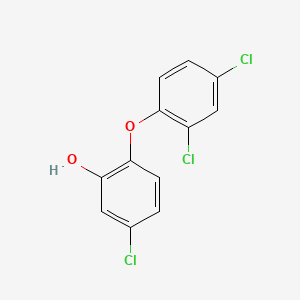
|
Name |
Triclosan
|
| Molecular Formula | C12H7Cl3O2 | |
| IUPAC Name* |
5-chloro-2-(2,4-dichlorophenoxy)phenol
|
|
| SMILES |
C1=CC(=C(C=C1Cl)O)OC2=C(C=C(C=C2)Cl)Cl
|
|
| InChI |
InChI=1S/C12H7Cl3O2/c13-7-1-3-11(9(15)5-7)17-12-4-2-8(14)6-10(12)16/h1-6,16H
|
|
| InChIKey |
XEFQLINVKFYRCS-UHFFFAOYSA-N
|
|
| Synonyms |
triclosan; 3380-34-5; 5-CHLORO-2-(2,4-DICHLOROPHENOXY)PHENOL; Irgasan; 2,4,4'-Trichloro-2'-hydroxydiphenyl ether; Cloxifenolum; Triclosanum; Irgasan DP300; Phenol, 5-chloro-2-(2,4-dichlorophenoxy)-; Stri-Dex Cleansing Bar; CH 3565; 5-Chloro-2-(2,4-dichloro-phenoxy)-phenol; 2,4,4'-Trichloro-2'-hydroxy diphenyl ether; CHEBI:164200; Ether, 2'-hydroxy-2,4,4'-trichlorodiphenyl; Phenyl ether, 2'-hydroxy-2,4,4'-trichloro-; CHEMBL849; NSC-759151; CH-3565; 4NM5039Y5X; DNDI1246774; Triclosan 10 microg/mL in Cyclohexane; TCL; NCGC00159417-02; NCGC00159417-05; NCGC00159417-06; Stri-Dex Face Wash; Aquasept; Sapoderm; Lexol 300; DSSTox_CID_12498; DSSTox_RID_78958; DSSTox_GSID_32498; Triclosanum [INN-Latin]; DP-300; Caswell No. 186A; Cloxifenol; SMR000471847; CAS-3380-34-5; HSDB 7194; Triclosan (USP/INN); SR-01000762974; EINECS 222-182-2; EPA Pesticide Chemical Code 054901; BRN 2057142; Sterzac; Stri-Dex cleansing bar (TN); UNII-4NM5039Y5X; CCRIS 9253; Triclosan USP; 1nhg; Triclosan [USAN:USP:INN:BAN]; Triclosan; Irgasan; MFCD00800992; Irgasan DP 30; TCCP; Neostrata Antibacterial Facial Cleanser; 3p9t; 4w9n; TRICLOSAN [INN]; TRICLOSAN [MI]; TRICLOSAN [HSDB]; TRICLOSAN [INCI]; TRICLOSAN [USAN]; TRICLOSAN [VANDF]; Epitope ID:119683; TRICLOSAN [MART.]; SCHEMBL3269; TRICLOSAN [USP-RS]; TRICLOSAN [WHO-DD]; MLS001066347; MLS001074876; MLS001335937; MLS001335938; BDBM8726; ZINC2216; TRICLOSAN [ORANGE BOOK]; DTXSID5032498; TRICLOSAN [USP MONOGRAPH]; HMS2093L17; HMS2270M06; HMS3259K19; HMS3715H11; HMS3872N03; Pharmakon1600-01505465; Irgasan, >=97.0% (HPLC); HY-B1119; Tox21_111648; Tox21_400079; DP 300; NSC759151; s4541; STL451034; AKOS015850380; Tox21_111648_1; CCG-213459; CH-3635; CS-4718; DB08604; KS-5356; NC00516; NSC 759151; COLGATE TOTAL COMPONENT TRICLOSAN; NCGC00159417-03; NCGC00159417-04; NCGC00159417-07; NCGC00159417-08; 2,4,4'-trichloro-2'-hydroxydiphenylethe; AC-10667; 5-chloro-2-(2, 4-dichlorophenoxy)phenol; SBI-0206807.P001; TRICLOSAN COMPONENT OF COLGATE TOTAL; 5-chloro-2-(2,4-di-chloro-phenoxy)-phenol; FT-0609773; T1872; D06226; D70549; S00100; 5-Chloro-2-(2,4-dichlorophenoxy)phenol, 97%; AB00698074_08; EN300-1272333; Triclosan, Antibiotic for Culture Media Use Only; 380T345; A821950; Q408646; 2-[2,4-bis(chloranyl)phenoxy]-5-chloranyl-phenol; Q-201866; SR-01000762974-2; SR-01000762974-3; BRD-K41731458-001-04-5; BRD-K41731458-001-09-4; Triclosan, certified reference material, TraceCERT(R); F2173-0825; Triclosan, United States Pharmacopeia (USP) Reference Standard; Triclosan, Pharmaceutical Secondary Standard; Certified Reference Material
|
|
| CAS | 3380-34-5 | |
| PubChem CID | 5564 | |
| ChEMBL ID | CHEMBL849 |
*Note: the IUPAC Name was collected from PubChem.
Chemical Classification: |
|
|
|---|
——————————————————————————————————————————
NPs Species Source
| Endophyte ID | Endophyte Name | Family | Genus | Taxonomy ID | GenBank ID | Closest GenBank ID | Reference | |
|---|---|---|---|---|---|---|---|---|
| Endophyte ID | Endophyte Name | Family | Genus | Taxonomy ID | GenBank ID | Closest GenBank ID | Reference |
NPs Biological Activity
| Bioactivity Name | Target ID | Target Name | Target Type | Target Organism | Target Organism ID | Potency of Bioactivity | Activity Type | Value | Unit | Endophyte ID | Endophyte Name | |
|---|---|---|---|---|---|---|---|---|---|---|---|---|
| Bioactivity Name | Target ID | Target Name | Target Type | Target Organism | Target Organism ID | Potency of Bioactivity | Activity Type | Value | Unit | Endophyte ID | Endophyte Name |
NPs Physi-Chem Properties
| Molecular Weight: | 289.5 | ALogp: | 5.0 |
| HBD: | 1 | HBA: | 2 |
| Rotatable Bonds: | 2 | Lipinski's rule of five: | Rejected |
| Polar Surface Area: | 29.5 | Aromatic Rings: | 2 |
| Heavy Atoms: | 17 | QED Weighted: | 0.796 |
——————————————————————————————————————————
NPs ADMET Properties*
ADMET: Absorption
| Caco-2 Permeability: | -4.863 | MDCK Permeability: | 0.00000983 |
| Pgp-inhibitor: | 0.012 | Pgp-substrate: | 0.001 |
| Human Intestinal Absorption (HIA): | 0.003 | 20% Bioavailability (F20%): | 0.002 |
| 30% Bioavailability (F30%): | 0.754 |
——————————————————————————————————————————
ADMET: Distribution
| Blood-Brain-Barrier Penetration (BBB): | 0.082 | Plasma Protein Binding (PPB): | 100.67% |
| Volume Distribution (VD): | 1.137 | Fu: | 0.95% |
——————————————————————————————————————————
ADMET: Metabolism
| CYP1A2-inhibitor: | 0.984 | CYP1A2-substrate: | 0.437 |
| CYP2C19-inhibitor: | 0.946 | CYP2C19-substrate: | 0.092 |
| CYP2C9-inhibitor: | 0.835 | CYP2C9-substrate: | 0.9 |
| CYP2D6-inhibitor: | 0.776 | CYP2D6-substrate: | 0.782 |
| CYP3A4-inhibitor: | 0.117 | CYP3A4-substrate: | 0.341 |
——————————————————————————————————————————
ADMET: Excretion
| Clearance (CL): | 7.208 | Half-life (T1/2): | 0.243 |
——————————————————————————————————————————
ADMET: Toxicity
| hERG Blockers: | 0.141 | Human Hepatotoxicity (H-HT): | 0.048 |
| Drug-inuced Liver Injury (DILI): | 0.874 | AMES Toxicity: | 0.043 |
| Rat Oral Acute Toxicity: | 0.056 | Maximum Recommended Daily Dose: | 0.427 |
| Skin Sensitization: | 0.78 | Carcinogencity: | 0.309 |
| Eye Corrosion: | 0.025 | Eye Irritation: | 0.932 |
| Respiratory Toxicity: | 0.309 |
——————————————————————————————————————————
*Note: the ADMET properties was calculated by ADMETlab 2.0. Reference: PMID: 33893803.
Similar Compounds*
Compounds similar to EMNPD with top10 similarity:
| Similar NPs | Similar Drugs | ||||||
|---|---|---|---|---|---|---|---|
| NPs ID | NPs 2D Structure | Similarity Score | TTD ID | Drug 2D Structure | Similarity Score | ||
| ENC001364 | 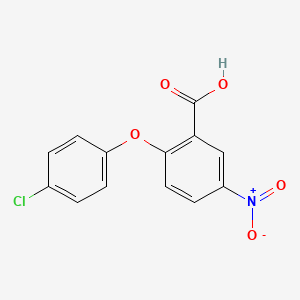 |
0.342 | D00CSQ | 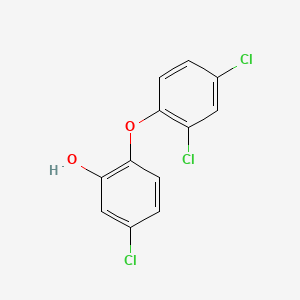 |
1.000 | ||
| ENC001367 | 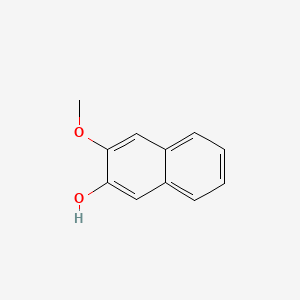 |
0.313 | D01IEM | 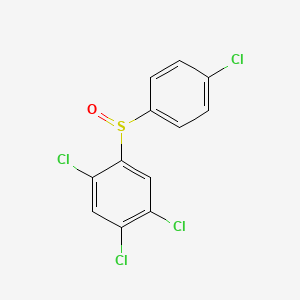 |
0.412 | ||
| ENC002601 | 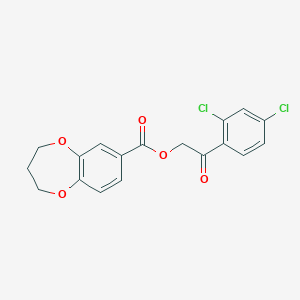 |
0.311 | D00AXJ | 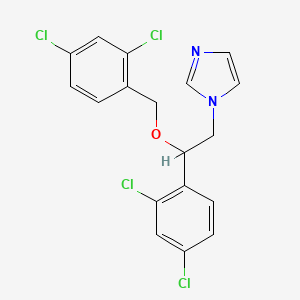 |
0.388 | ||
| ENC002587 |  |
0.301 | D0J9ZR | 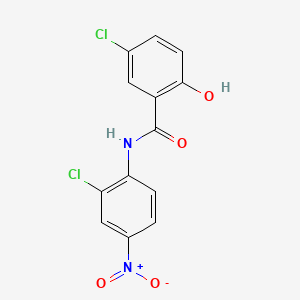 |
0.387 | ||
| ENC001961 |  |
0.293 | D04GYO |  |
0.375 | ||
| ENC004820 | 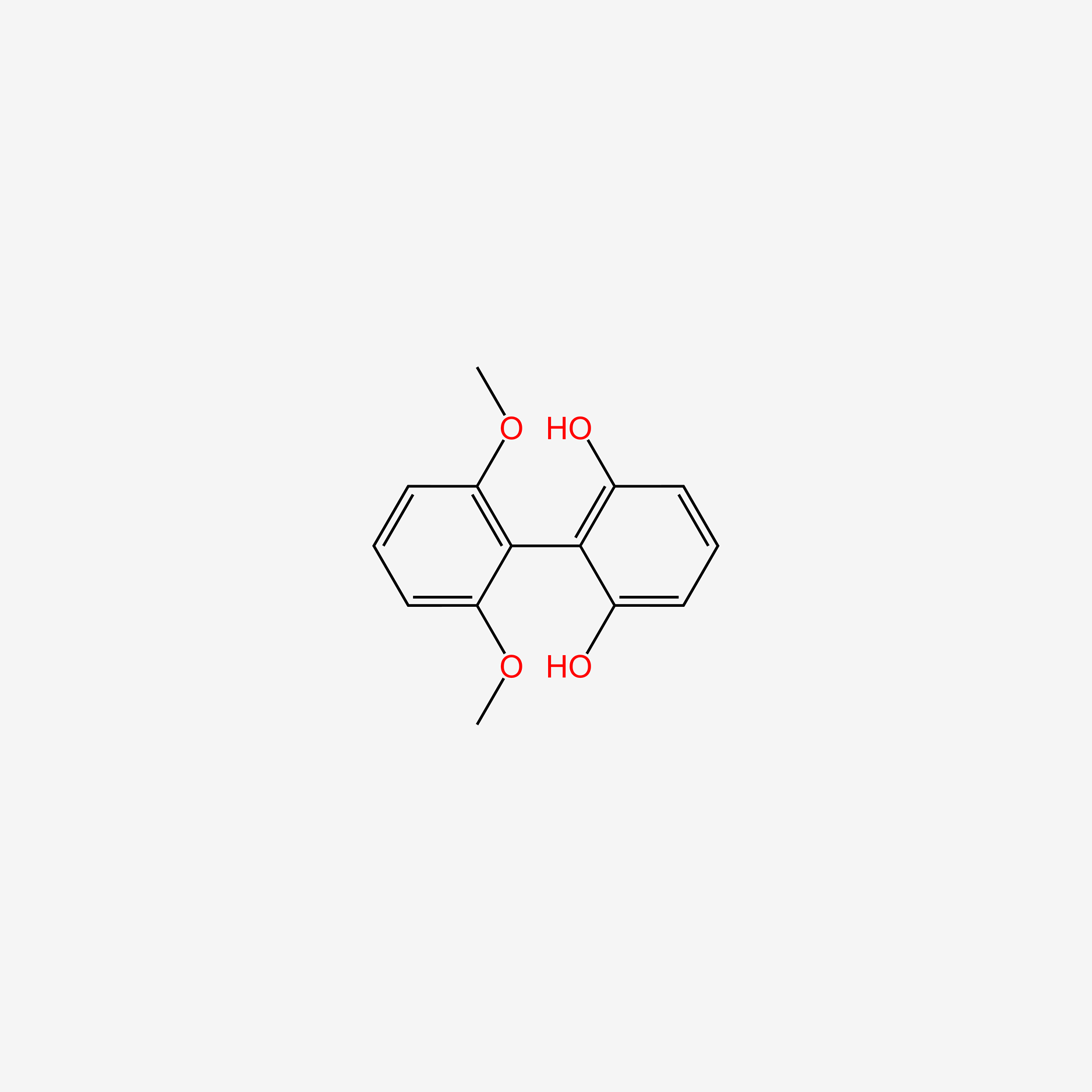 |
0.293 | D00NJL |  |
0.370 | ||
| ENC002077 | 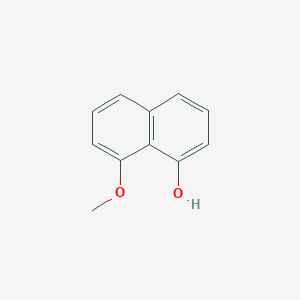 |
0.292 | D02VMJ |  |
0.359 | ||
| ENC001537 |  |
0.284 | D0EV8E | 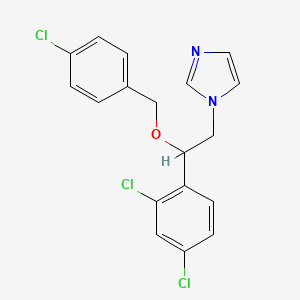 |
0.349 | ||
| ENC001848 |  |
0.280 | D0X8XA |  |
0.333 | ||
| ENC000083 | 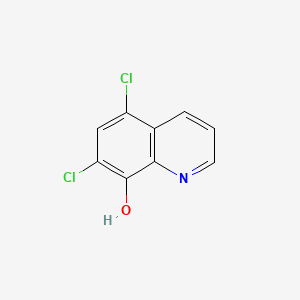 |
0.277 | D0E0OG |  |
0.325 | ||